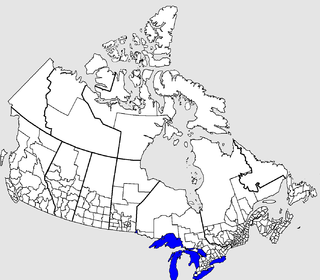A local government is a form of public administration which, in a majority of contexts, exists as the lowest tier of administration within a given state. The term is used to contrast with offices at state level, which are referred to as the central government, national government, or federal government and also to supranational government which deals with governing institutions between states. Local governments generally act within powers delegated to them by legislation or directives of the higher level of government. In federal states, local government generally comprises the third tier of government, whereas in unitary states, local government usually occupies the second or third tier of government, often with greater powers than higher-level administrative divisions.

A district is a type of administrative division that, in some countries, is managed by local government. Across the world, areas known as "districts" vary greatly in size, spanning regions or counties, several municipalities, subdivisions of municipalities, school district, or political district.

The census geographic units of Canada are the administrative divisions defined and used by Canada's federal government statistics bureau Statistics Canada to conduct the country's five-yearly census. They exist on four levels: the top-level (first-level) divisions are Canada's provinces and territories; these are divided into second-level census divisions, which in turn are divided into third-level census subdivisions and fourth-level dissemination areas.
Canadian securities regulation is managed through laws and agencies established by Canada's 13 provincial and territorial governments. Each province and territory has a securities commission or equivalent authority and its own piece of provincial or territorial legislation.
The Royal Commission on the Future of Health Care in Canada, also known as the Romanow Report, is a committee study led by Roy Romanow on the future of health care in Canada. It was delivered in December 2002.

The National Search and Rescue Program (NSP) is the name given by the Government of Canada to the collective search and rescue (SAR) activities in Canada. Until 2015, the NSP was administered by the National Search and Rescue Secretariat (NSS).
The first meeting of an enduring municipal association was held in Hamilton on September 6, 1899. The name "Ontario Municipal Association" was chosen, and it was agreed that there would be annual meetings, or "oftener if need be, upon the call of the executive committee", so that both appointed and elected representatives of municipalities could discuss common concerns. A constitution for the organization was drawn up, officers elected and the mandate decided ‑ to establish regular meetings between the association and the government to speak to, and to influence legislation.
An informal network of non-profit community organizations across Canada. The work of social planning organizations focuses on a range of community development and social justice issues.
Social programs in Canada include all government programs designed to give assistance to citizens outside what the market provides. The Canadian social safety net covers a broad spectrum of programs, and because Canada is a federation, many are run by the provinces. Canada has a wide range of government transfer payments to individuals, which totaled $176.6 billion in 2009. Only social programs that direct funds to individuals are included in that cost; programs such as medicare and public education are additional costs.
Canadian Crown corporations are state-owned enterprises owned by the Sovereign of Canada. They are established by an Act of Parliament or Act of a provincial legislature and report to that body via a minister of the Crown in the relevant cabinet, though they are "shielded from constant government intervention and legislative oversight" and thus "generally enjoy greater freedom from direct political control than government departments."
A province is almost always an administrative division within a country or state. The term derives from the ancient Roman provincia, which was the major territorial and administrative unit of the Roman Empire's territorial possessions outside Italy. The term province has since been adopted by many countries. In some countries with no actual provinces, "the provinces" is a metaphorical term meaning "outside the capital city".

Higher education in Canada describes the constellation of provincial higher education systems in Canada and their relationships with tent of federal government, provinces, and territories.
Public housing policies in Canada includes rent controls, as well as subsidized interest rates and grants. Early public housing policy in Canada consisted of public-private lending schemes which focused on expanding home ownership among the middle class. The first major housing initiative in Canada was the Dominion Housing Act of 1935, which increased the amount of credit available for mortgage loans.
In Canada, municipal government is a type of local council authority that provides local services, facilities, safety and infrastructure for communities. Canada has three levels of government; federal, provincial and municipal. According to Section 92(8) of the Constitution Act, 1867, "In each Province the Legislature may exclusively make Laws in relation to... Municipal Institutions in the Province." There are about 3,700 municipal governments in Canada. Municipal governments are established under provincial/territorial authority.
The Canadian Housing and Renewal Association (CHRA) is a national non-profit association in Canada representing those working in affordable housing and homelessness in Canada.

Affordability of housing in Canada presents a complex paradox. By 2004, 1.7 million Canadians had housing affordability issues, yet Canada is considered to be among the more affordable places to live, using market-oriented analyses of affordability such as those provided by the Royal Bank of Canada. Canadian government public policies intervene when affordability of housing is stressed to the point home ownership becomes inaccessible even to individuals with full-time employment. The continuum of affordable housing in Canada includes market, non-market, government-subsidized housing. Measuring affordability of housing is complicated by Canada's vast physical and human geography which includes remote northern communities and affluent urban regions. Housing prices and construction costs have risen dramatically in Canada as they have elsewhere in the world. Income levels in the upper quintile have increased exponentially while those in lower quintiles have remained stagnant. The rising inequality gap presents a significant challenge for Canadian households who are "priced out" of rental and ownership housing markets.
Homelessness in Vancouver, British Columbia, Canada is a social crisis that has been rapidly accelerating over the last decade. According to the United Nations, homelessness can either be relative or absolute. Absolute homelessness describes people living in absence of proper physical shelter. Relative homelessness describes people living in poor conditions of health or security, including an absence of both personal safety and steady income despite having physical shelter to reside in. As of 2011, roughly 2,651 people in Vancouver are subject to one of these types of homelessness, or are transitioning between them. Homelessness as a social issue in Vancouver originated from federal funding cuts to affordable housing. After market housing increased, the cost of housing became one of Vancouver's main causes of homelessness, alongside lack of income. The homeless population in Vancouver have developed or previously suffered from mental health and addiction issues, and they are subjected to high amounts of crime-related victimization. There have been several approaches to reducing the homeless population in Greater Vancouver by the city and other organizations. As of 2011, the rate of homelessness in Vancouver has stopped increasing, but it is not being reduced either.
The Community Futures Network of Canada is an extensive network of 269 community futures development corporations. The national Community Futures Program is administered by four regional development agencies, the Atlantic Canada Opportunities Agency (ACOA), Canadian Economic Development for Québec Regions (CED-Q), Western Economic Diversification Canada (WD), and the Federal Economic Development Initiative for Northern Ontario (FedNor) under Industry Canada (IC). In Western Canada the Community Futures Program is delivered through a network of 90 non-profit organizations that are supported by four associations and one Pan-West Community Futures Network.

Rainwater harvesting is becoming a procedure that many Canadians are incorporating into their daily lives, although data does not give exact figures for implementation. Rainwater can be used for a number of purposes including stormwater reduction, irrigation, laundry and portable toilets. In addition to low costs, rainwater harvesting is useful for landscape irrigation.







